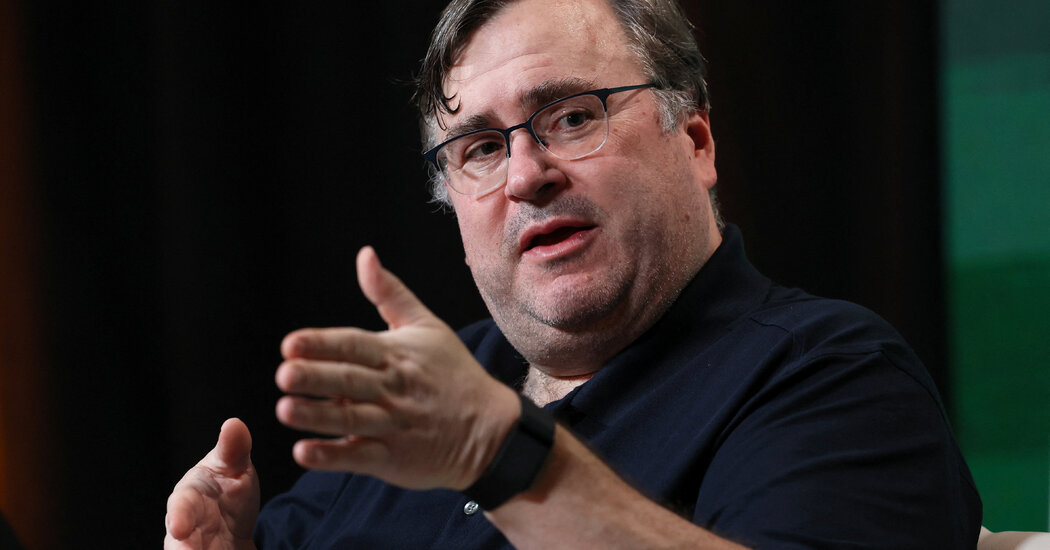Some California Farmers Pay for Groundwater. Is That Workable?
It’s Monday. Behind a program that charges farmers in the Pajaro Valley for groundwater. Plus, California and other states that rely on the dwindling Colorado River are racing to agree on consumption cuts.
California’s Central Coast is an expensive place to grow food.
The Pajaro Valley, which stretches for 10 miles along the coast of Monterey Bay, charges farmers for irrigation water from wells, a system that’s far different from elsewhere in the nation, where growers typically water their crops by freely pumping groundwater.
In Pajaro, farmers must pay for the precious resource through a system that creates an incentive to conserve water, and that also raises revenue that goes toward recycling water to use on crops. The system has reduced groundwater usage in the valley by 20 percent and could serve as a model for how to conserve water across the United States, my colleague Coral Davenport recently reported.
I spoke to Coral about her reporting, and why a system created in the Pajaro Valley in the early 1990s is worthy of attention in 2024. Here’s our conversation, lightly edited.
Why are people looking to the Pajaro Valley right now?
The day of reckoning for America’s groundwater is fast approaching. In many parts of the country where agriculture relies on groundwater for irrigation, the groundwater will soon run out, and there aren’t good policies in place to conserve it. In the Pajaro Valley, that day came 40 years ago, when the groundwater levels fell so low that its famous strawberry crops were destroyed by saltwater intrusion. But the farmers there banded together and came up with a solution that isn’t perfect and has cost a lot of money and legal battles, but in the long run has saved the aquifer and the agricultural economy of the region. So a lot of experts and executives say it could offer a road map to avert the coming crises elsewhere.
Why hasn’t this model spread more?
Politics. The Pajaro Valley water management authorities don’t call their water pricing program a tax, but it effectively functions like one. The politics of compelling American farmers to pay a tax on groundwater — a resource that has been free basically forever — are incredibly difficult. One thing I learned from reporting this story is that many farmers don’t even want the government to put groundwater meters on their land just to measure the amount that they’re using. Overcoming these deeply held political views is a huge challenge.
What consequences could charging for water in more places have on farmers and shoppers?
Experts said that pricing groundwater for agriculture across the country could profoundly change American agriculture. In some places, adding a charge for water would increase the cost of the crops and thus of the food or textiles produced by the crops — or it could cause farmers to change what they grow. In other cases, where groundwater is running low and the revenue for certain crops is not high, it could simply end the farming of major commodity crops across vast swaths of the nation — such as cotton in Texas, a commodity crop that relies on the dwindling waters of the Ogallala Aquifer for irrigation.
Did this story in any way change how you think about water and farming?
I was really impressed with how well this solution actually worked in the Pajaro Valley. I think a lot of it is specific to the conditions of the place, the people and the economy, but it gave me hope that there is a clear, demonstrable solution to this oncoming crisis, if people are willing to face it head-on.
Tell us
What are you looking forward to in 2024? Celebrating milestone birthdays, traveling to new places, picking up a new hobby?
Tell us your hopes for the new year at [email protected]. Please include your full name and the city in which you live.
And before you go, some good news
An artist from Santa Clarita has turned to painting as a form of self-expression — and therapy — as her vision worsens, KABC reports.
The artist, Therese Verner, is legally blind but has partial vision in one eye, which she uses as a guide when she paints. Though her career in the arts has been diverse, Verner works mainly in oil paints and mixed media today. Her work, which is prolific, often depicts desert landscapes and lush fields of flowers, images inspired by her love of nature.
Over the years, as Verner’s vision has worsened, painting has become a grounding force for her. Her passion has also caught the attention of local galleries and museums in California, including the San Luis Obispo Museum of Art and the Poway Center for the Performing Arts, a Southern California theater, which put on a solo show for Verner featuring 60 works of art in 2019.
“It’s not only a great way to express myself,” Verner told ABC in a recent interview. “It’s also therapy.”
Thanks for reading. I’ll be back tomorrow. — Soumya
A correction was made on Jan. 5, 2024: Friday’s newsletter misidentified Lloyd Masson’s role. He is a prosecutor in San Bernardino County who specializes in cold cases, not a prosecutor in George Gascón’s office.


